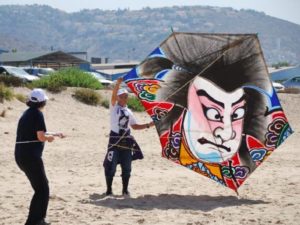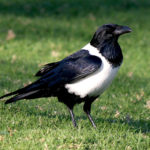Kites
 Kites are one of the most exciting children’s entertainment in many countries. It is unlikely that there will be a man who at least once in his childhood did not launch this flying miracle into the air. And how much joy was when his serpent rose above all. Kites come in all kinds of shapes, types and designs, they usually have a colorful design and are able to climb to a huge height, limited only by the length of the cord on which it is held.
Kites are one of the most exciting children’s entertainment in many countries. It is unlikely that there will be a man who at least once in his childhood did not launch this flying miracle into the air. And how much joy was when his serpent rose above all. Kites come in all kinds of shapes, types and designs, they usually have a colorful design and are able to climb to a huge height, limited only by the length of the cord on which it is held.
Every year in April, an original holiday is held in the Chinese city of Weifang – the international kite festival, which brings together amateurs of this entertainment, professional athletes, manufacturers of flying structures and just tourists from different countries.
Among the Chinese, kites are popular not only among children, but also among adults. The manufacture and launch of kites in this country has become a whole tradition, leading from a person named Lu Pan or Kunshu Pian who lived in the 5th or 4th century BC. He made these flying toys in the form of birds or kites with wings, fairy dragons that could stay in the air for several days and at the same time perform various pirouettes in flight. From this came the name “kite”. Somewhat later, this man was even equated with a deity and was considered the patron saint of artisans.
The design of flying kites in those ancient times was very diverse. But of most interest is the flying dragon – a fantastic winged kite. Why in the form of dragons? Yes, because in China they worshiped dragons, as they did before wise and kind creatures. A huge dragon floating in the air is considered a symbol of supernatural power. In addition, the launch of a kite among the Chinese is associated with the departure of all ills and bad thoughts. This belief has been preserved today, so you can often see how on the ninth day of the ninth month, on a holiday – the day of the serpent, they are launched in the presence of all family members.
The design of such a flying dragon is quite complicated. It consists of two or three dozen voluminous frames covered with paper or fabric, which form the long round body of a dragon wriggling in flight. The dragon has a large head with an open mouth, through which the wind penetrates the empty torso, inflates it, so that it stays in the air. In some designs, the skeleton of the dragon’s body consists of round discs, decreasing towards the tail and connected by cords.
For greater effect, “snake music” is used, a special device made of dry poppy heads with reed whistles inserted into them. The sound of these whistles resembles the howling wind in a chimney. A leer is attached to the dragon’s mouth, and silk ribbons that twist during flight are attached to the tail. Lanterns made of colored paper or fireworks are attached to snakes – tubes filled with a combustible mixture, flashing in different colors. Many snakes portray portraits, and the tail is made of silk ribbons.
Kites have always been popular not only among children of wealthy parents, but also among children from poor families, then the manufacture of a kite is quite cheap, they are made from improvised material, mainly paper and bamboo. The main thing for a snake to rise above all lies in the craftsmanship of its manufacture, in its proper shape and balance, although the appearance of the snake has always been given special attention. With the invention of silk in China, instead of paper for the manufacture of kites began to use this lightweight and durable material.
Whatever the case, it was in China that the manufacture of kites over time became a separate craft, almost an art. Kites made in China are sold in many countries around the world. Over time, kites became known on all continents. They became the property of not only children, but also adult fans of aircraft. In addition to China, kites are widespread in Korea, Japan, Thailand, Malaysia, Polynesia and others. Externally, kites in these countries are significantly different from Chinese, where they acquired new forms.
In Europe, kites came from the East in the Middle Ages. Although historians believe that regardless of China in ancient Greece, the same flying structure was invented in the 4th century. BC. Ancient Greek scholar Architent of Tarenta. But, unfortunately, the drawings and drawings of the construction of ancient European kites were not preserved. It is known for certain about the existence of kites in Russia. Prince of Kiev Oleg back in 906, when capturing Constantinople, used flying kites. Sailors made attempts to use kites to enhance sailing.



























